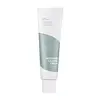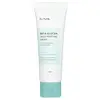What's inside
What's inside
 Key Ingredients
Key Ingredients

 Benefits
Benefits

 Concerns
Concerns

No concerns
 Ingredients Side-by-side
Ingredients Side-by-side

Water
Skin ConditioningArtemisia Princeps Extract
Skin ConditioningGlycerin
HumectantEthylhexyl Isononanoate
EmollientDipropylene Glycol
HumectantGlycyrrhiza Glabra Root Extract
BleachingPanthenol
Skin ConditioningArachidyl Alcohol
EmollientBehenyl Alcohol
EmollientArachidyl Glucoside
EmulsifyingGlucose
HumectantCetearyl Olivate
Sorbitan Olivate
EmulsifyingDipotassium Glycyrrhizate
HumectantAllantoin
Skin ConditioningTheobroma Cacao Seed Extract
AntioxidantCarbomer
Emulsion StabilisingXanthan Gum
EmulsifyingAmmonium Acryloyldimethyltaurate/Vp Copolymer
Disodium EDTA
Caprylyl Methicone
Skin ConditioningEthylhexylglycerin
Skin ConditioningTromethamine
BufferingGlycereth-26
HumectantBeta-Glucan
Skin Conditioning1,2-Hexanediol
Skin ConditioningCeramide AP
Skin ConditioningButylene Glycol
HumectantCaprylic/Capric Triglyceride
MaskingWater, Artemisia Princeps Extract, Glycerin, Ethylhexyl Isononanoate, Dipropylene Glycol, Glycyrrhiza Glabra Root Extract, Panthenol, Arachidyl Alcohol, Behenyl Alcohol, Arachidyl Glucoside, Glucose, Cetearyl Olivate, Sorbitan Olivate, Dipotassium Glycyrrhizate, Allantoin, Theobroma Cacao Seed Extract, Carbomer, Xanthan Gum, Ammonium Acryloyldimethyltaurate/Vp Copolymer, Disodium EDTA, Caprylyl Methicone, Ethylhexylglycerin, Tromethamine, Glycereth-26, Beta-Glucan, 1,2-Hexanediol, Ceramide AP, Butylene Glycol, Caprylic/Capric Triglyceride
Water
Skin ConditioningButylene Glycol
HumectantGlycerin
HumectantMethyl Trimethicone
Skin ConditioningCentella Asiatica Extract
CleansingBeta-Glucan
Skin ConditioningCetearyl Alcohol
Emollient1,2-Hexanediol
Skin ConditioningNiacinamide
SmoothingHydrogenated Polyisobutene
EmollientIsononyl Isononanoate
EmollientCetearyl Glucoside
EmulsifyingGlyceryl Stearate
EmollientSorbitan Stearate
EmulsifyingCetearyl Olivate
Sorbitan Olivate
EmulsifyingAcrylates/C10-30 Alkyl Acrylate Crosspolymer
Emulsion StabilisingBetaine
HumectantAllantoin
Skin ConditioningAdenosine
Skin ConditioningDipotassium Glycyrrhizate
HumectantGlucose
HumectantSodium Hyaluronate
HumectantArginine
MaskingPrunus Salicina Fruit Extract
AntioxidantPunica Granatum Fruit Extract
AntioxidantRubus Idaeus Fruit Extract
AstringentFragaria Vesca Fruit Extract
AstringentPrunus Persica Fruit Extract
AbrasiveWater, Butylene Glycol, Glycerin, Methyl Trimethicone, Centella Asiatica Extract, Beta-Glucan, Cetearyl Alcohol, 1,2-Hexanediol, Niacinamide, Hydrogenated Polyisobutene, Isononyl Isononanoate, Cetearyl Glucoside, Glyceryl Stearate, Sorbitan Stearate, Cetearyl Olivate, Sorbitan Olivate, Acrylates/C10-30 Alkyl Acrylate Crosspolymer, Betaine, Allantoin, Adenosine, Dipotassium Glycyrrhizate, Glucose, Sodium Hyaluronate, Arginine, Prunus Salicina Fruit Extract, Punica Granatum Fruit Extract, Rubus Idaeus Fruit Extract, Fragaria Vesca Fruit Extract, Prunus Persica Fruit Extract
 Reviews
Reviews

Ingredients Explained
These ingredients are found in both products.
Ingredients higher up in an ingredient list are typically present in a larger amount.
1,2-Hexanediol is a synthetic liquid and another multi-functional powerhouse.
It is a:
- Humectant, drawing moisture into the skin
- Emollient, helping to soften skin
- Solvent, dispersing and stabilizing formulas
- Preservative booster, enhancing the antimicrobial activity of other preservatives
Allantoin is a soothing ingredient known for its protective and moisturizingg properties. Because of this, it is often added to products with strong active ingredients.
Studies show higher concentrations of this ingredient can promote wound healing.
Though it can be derived from the comfrey plant, allantoin is produced synthetically for cosmetic products to ensure purity.
Learn more about AllantoinBeta-Glucan is a polysaccharide. It can be derived from the cell walls of seaweed, oats, yeast, and fungi. It hydrates the skin and helps boost your skin's natural barrier.
As an antioxidant, beta-glucan helps fight free-radicals. Free-radicals are molecules that may damage your skin cells, such as pollution.
Studies show this ingredient may be an effective wrinkle reducer as it can deeply penetrate into skin. It has also been show to help with wound healing.
Learn more about Beta-GlucanButylene Glycol (or BG) is used within cosmetic products for a few different reasons:
Overall, Butylene Glycol is a safe and well-rounded ingredient that works well with other ingredients.
Though this ingredient works well with most skin types, some people with sensitive skin may experience a reaction such as allergic rashes, closed comedones, or itchiness.
Learn more about Butylene GlycolCetearyl Olivate is an emulsifier and texture enhancer. It is derived from the fatty acids of olive oil and Cetearyl alcohol, and is biodegradable.
As an emulsifier, it is used to prevent oils and waters from separating. It can also
Manufacturers use the name Olivem 1000. This ingredient has been found to preserve the natural microbiome of skin. Having a healthy microbiome helps keep our skin healthy and protects against harmful bacteria. This ingredient is grouped with Sorbitan Olivate under the name Olivem 1000.
Learn more about Cetearyl OlivateDipotassium Glycyrrhizate comes from licorice root.
Extracts of licorice have demonstrated to have antibacterial, anti‐inflammatory, antiviral, antioxidant properties.
One component, glabridin, has extra potent antioxidant and soothing properties. It has also been found to block pigmentation from UVB rays in guinea pigs.
Licorice Root also contains a flavonoid. Flavonoids are a natural substance from in plants. Flavonoids also have antioxidant properties.
Another component, glycyrrhizin, has been found to have anti-inflammatory and antimicrobial benefits. This may make licorice root extract effective at treating acne. However, more research is needed to support this.
Liquiritin is one of the flavone compounds found in licorice. It has been found to help lighten skin by preventing tyrosinase from reacting with tyrosine. When the two react, protein is converted to melanin. Melanin is the substance in your body that gives your features pigmentation.
Licorice root is native to Southern Europe and Asia. It has been used in traditional Chinese medicine to help with respiratory issues.
Learn more about Dipotassium GlycyrrhizateGlucose is a simple sugar and is the most important source of energy in all organisms.
In skincare, glucose is used to hydrate the skin. It also acts as a prebiotic for our natural biome.
Glucose is hydrating due to its humectant property. As a humectant, glucose draws moisture from the air and from deeper levels in the skin.
Our skin contains many sugars that act as prebiotics and help strengthen our natural microbiome. Having a healthy microbiome helps protect our skin from harmful bacteria and other contaminants.
Studies show glucose may help with fading discoloration and pigmentation. This is because our skin metabolizes glucose into lactic acid. Lactic acid is an AHA that helps exfoliate the top layer of skin.
Learn more about GlucoseGlycerin is already naturally found in your skin. It helps moisturize and protect your skin.
A study from 2016 found glycerin to be more effective as a humectant than AHAs and hyaluronic acid.
As a humectant, it helps the skin stay hydrated by pulling moisture to your skin. The low molecular weight of glycerin allows it to pull moisture into the deeper layers of your skin.
Hydrated skin improves your skin barrier; Your skin barrier helps protect against irritants and bacteria.
Glycerin has also been found to have antimicrobial and antiviral properties. Due to these properties, glycerin is often used in wound and burn treatments.
In cosmetics, glycerin is usually derived from plants such as soybean or palm. However, it can also be sourced from animals, such as tallow or animal fat.
This ingredient is organic, colorless, odorless, and non-toxic.
Glycerin is the name for this ingredient in American English. British English uses Glycerol/Glycerine.
Learn more about GlycerinSorbitan Olivate is created from the fatty acids in olive oil and sorbitol.
This ingredient is an oil in water emulsifier. It helps stabilize a product by preventing oils and waters from separating. Sorbitan Olivate also helps hydrate the skin.
Manufacturers sell sorbitan olivate under the name OliveM 1000. OliveM 1000 a multifunctional ingredient. It is self-emulsifying. According to a manufacturer, OliveM 1000 does not disrupt natural skin biome.
Due to its olive oil base, this ingredient may not be fungal-acne safe.
Learn more about Sorbitan OlivateWater. It's the most common cosmetic ingredient of all. You'll usually see it at the top of ingredient lists, meaning that it makes up the largest part of the product.
So why is it so popular? Water most often acts as a solvent - this means that it helps dissolve other ingredients into the formulation.
You'll also recognize water as that liquid we all need to stay alive. If you see this, drink a glass of water. Stay hydrated!
Learn more about Water